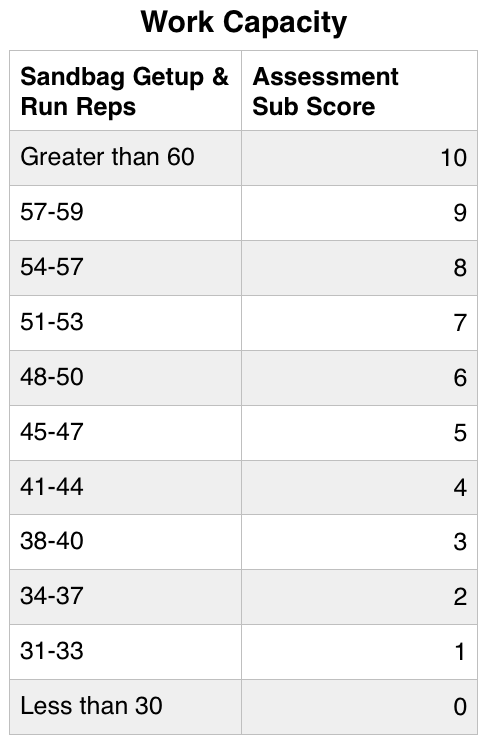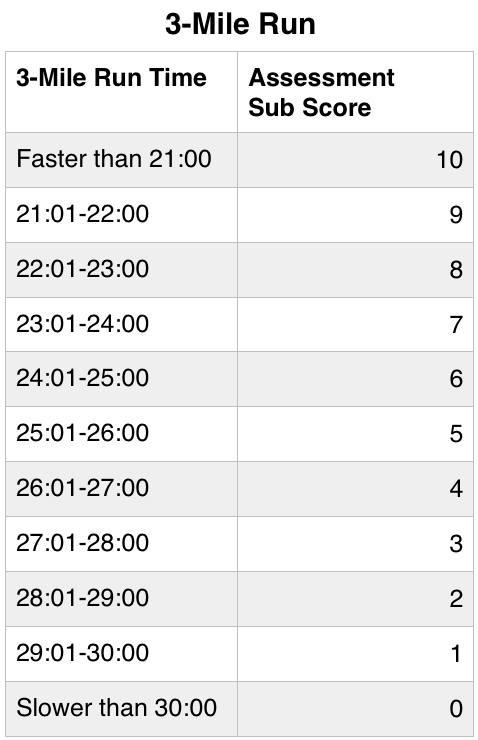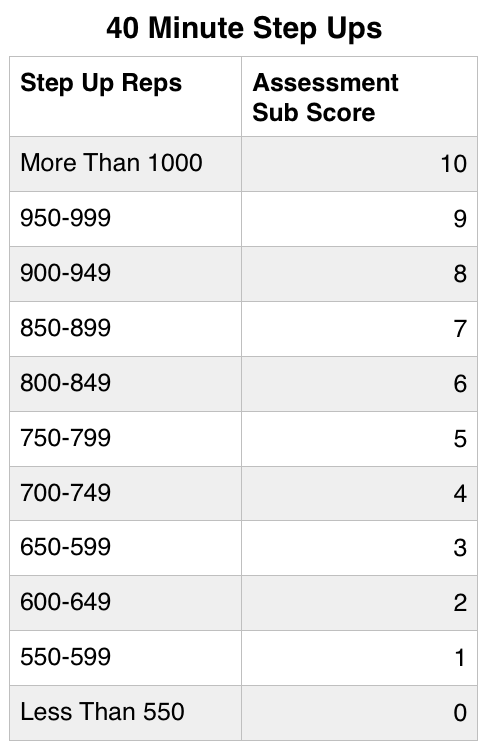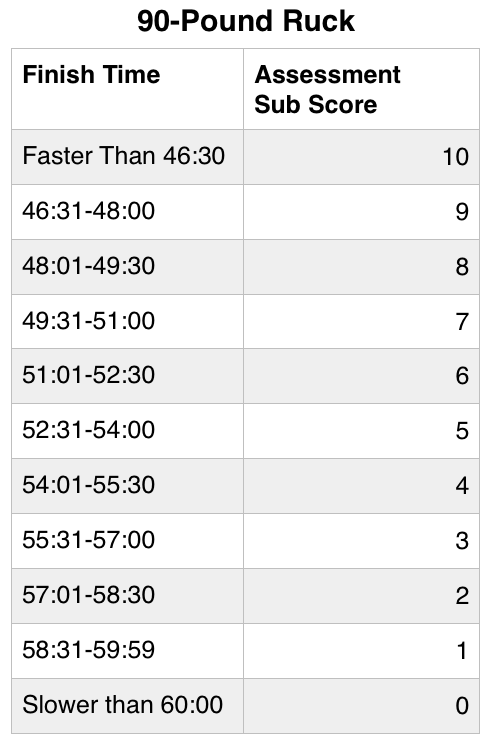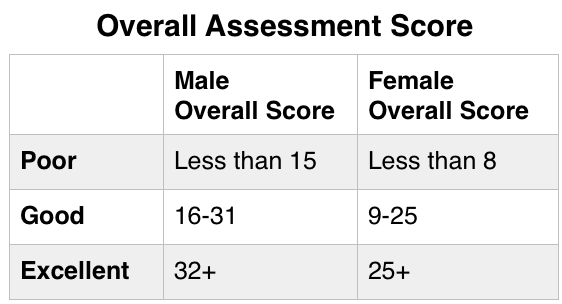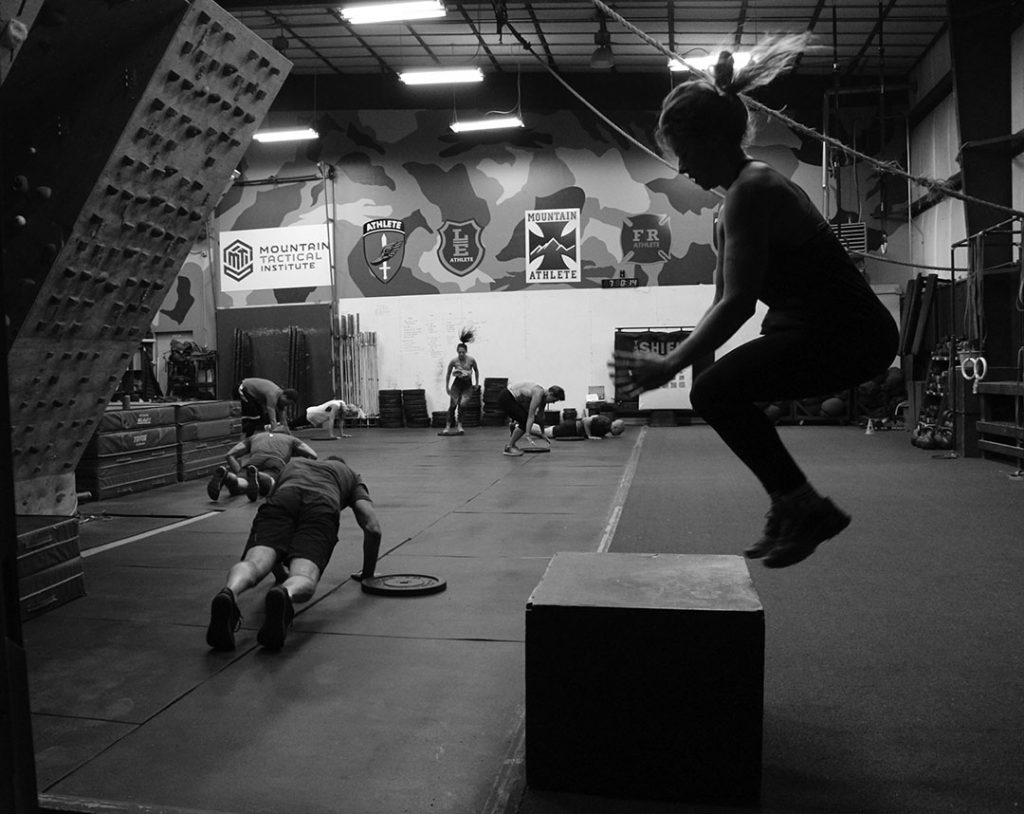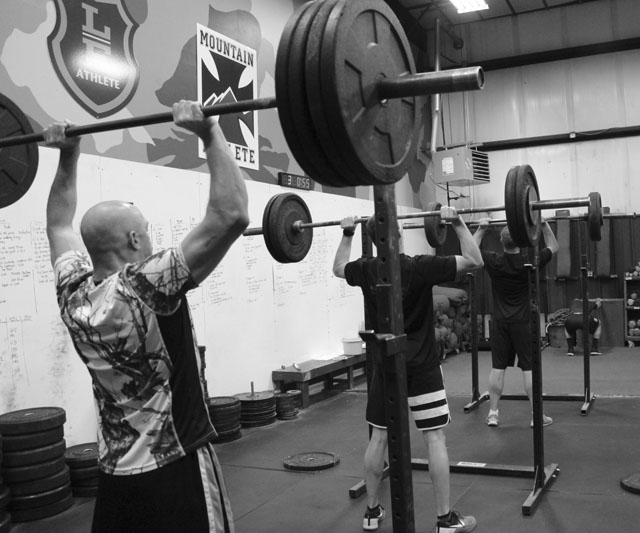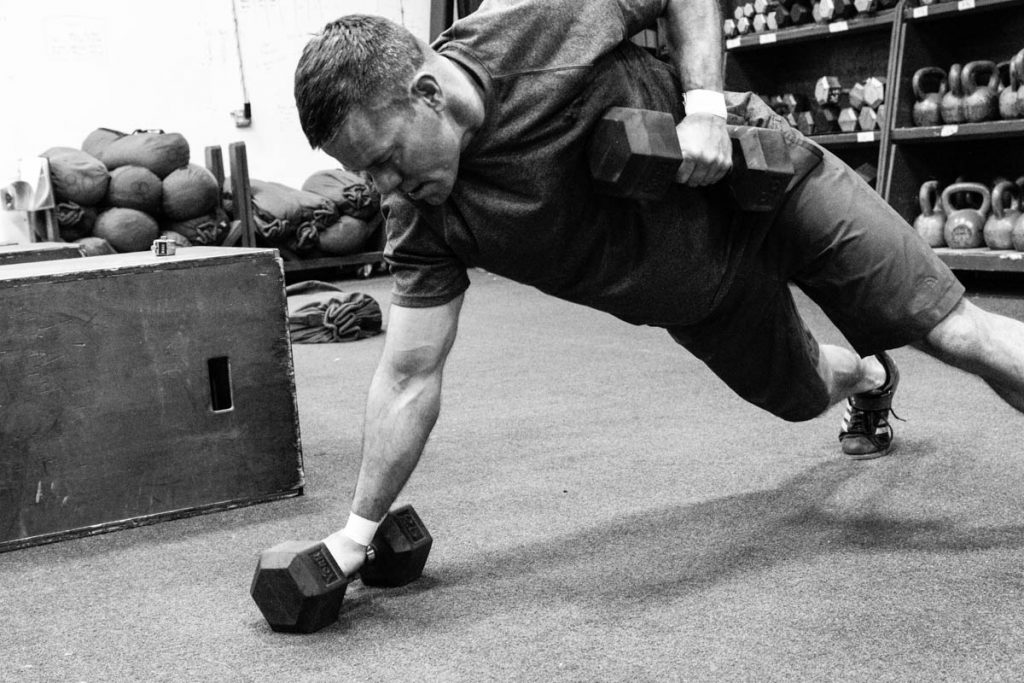QUESTION
Just got back from selection and was selected. Thanks for what you do. Your ruck based plan truly helped me be physically ready and allowed me to focus on the mental aspect of the course.
My question is, I have from now until January before I start the pipeline. What plans should I do between now and then? Thanks again for all that you do
ANSWER
Congrats on Selection!
– Rob
QUESTION
I have a slightly above average level of fitness. I am looking to go through the process in the UK to join the SAS Reserves. I don’t have an military experience so rucking is new to me. What program would you recommend to break me in and get me on the road ?!
ANSWER
– Rob
QUESTION
I’m 67 with two older knee prosthetics and can’t run. I can ruck with 35 pounds for 4 miles. I want to get complete the Bataan march in March. I also want to improve my fitness.
Most of your programs include running. I’m a member of Planet Fitness and have some equipment limits. What do you suggest?
ANSWER
I’m concerned our programming would be too intense for you. From what I do have, I’d recommend the
Bodyweight Foundation Training Plan now. You can replace the running in the plan with rucking.
Be smart and take extra days of recovery if needed. At the link above click the “sample training” tab – this shows the first week of programming. Do it and see how you recover before purchase.
– Rob
QUESTION
I’ve just started the Military On-ramp program, but currently don’t have a sandbag to use. In the meantime, what are some possible exercises I can do in place of exercises like the sandbag toss & chase and the sandbad keg lift?
ANSWER
There’s no real sub for the sandbag. Others build their own and bring them to the gym. You could sub light power clean and push press for the toss and chase – 95#, but once you build your sandbag, you’ll see how much heavier a 60 pound sandbag is than a 60 pound barbell.
– Rob
QUESTION
I have been following your MTI training programs as a subscriber and love everything that has been coming of it. I am much stronger by far since I have started and its been amazing. I am emailing you as a Crossfit Athlete looking to slightly increase my ability to crank out higher rep “sets” with heavier weights and was wondering what strength or even metabolic conditioning plans you may have to help this? I know you are more military athlete driven but I have never seen such impressive results in my crossfit performances because of the type of training I have been doing while following your programming. What I am basically looking for is almost like a hybrid hypertrophy/conditioning strength program that will increase my ability as mentioned earlier to cycle a barbell in front squats, dumbells, power cleans, snatches, thrusters and deadlifts. I am past really trying to increase my absolute and 1RM strength and more looking for that previously mentioned hypertrophy lactic acid threshold increase. I am sorry if this was a lot but I cant tell you enough how much I appreciate your programming and want to continue. I am just stalling a bit and am a little lost on what to do.
Thank you for your time and everything you do!
ANSWER
I don’t have a specific plan for you as I don’t do CrossFit programming, but for general approach, to increase that type of fitness density programming would work best. I’d apply the theory behind the push up and sit up work in the
APFT Training Plan to the specific exercises and loading you’re looking to improve.
– Rob
QUESTION
I’m a tele skier who lives in Santa Cruz California.
No snow year round. mostly road ride mnt bike ride, roller ski and do some CrossFit.
Plan to hit the snow in January (Tahoe and Whistler) Looking for a specific tele training program. I have a decent home gym in my garage.
ANSWER
– Rob
QUESTION
Hey rob. Love your stuff. Congrats.
What would be the pro/con of:
6 rds bench then
6 rds squat then
6 rds DL
Versus
1 set Bench
1 set Squat
1 set DL
Done 6 times.
In your opinion, is there a benefit or drawback of doing it one way vs the other?
ANSWER
The 1 rep sequence will get you stronger as the intensity (loading) will be higher.
The 6 rep sequence is moderately loaded, so won’t lead to as much max effort strength gain but will help with work capacity/working strength.
– Rob
QUESTION
I am 55 year old male and who has been out of the Marine Corp for 30 years. Have had a lower back fusion and just lost 50 lbs.
My doctor recommended you as a good way to get back in shape. I hope you can help me.
Thank You
ANSWER
– Rob
QUESTION
I have been training for my whole life, was an Olympic Trial qualifying swimmer, always an athlete.
Since then I’ve transitioned more to lifting weights and strength.
I spent this last year and a half focusing on SFAS prep and have a few retired Green Berets training me. Of course I’m asking them the same question now but I’ve used your programs in the past all the way back to 2010…
I overdid it with the Rucking and Running and developed Sesmoiditis and can’t run or ruck for 6 weeks while I’m in a boot.
Currently still lifting and using my swimming background + cycling for cardio..
I’m looking at getting your SFAS program however I know most of them focus on rucking and running. Do yours also include detailed workouts similar to the PT that’ll be done at SFAS or not so much?
I don’t have it in me to stop training so I’m looking for all alternatives I can.
I’m 6ft, 195lbs @ 11% body fat last I checked.
Any advice or direction helps and is truly appreciated, feel free to refer me to a plan and I’d be happy to subscribe and utilize it to the fullest!
ANSWER
The Ruck Based Selection Training Plan includes focused training for the APFT and the work capacity events (smokers) you’ll face at SFAS.
– Rob
QUESTION
I am an active duty SOF soldier (PSYOP) that was just introduced to the THOR program offered at my Battalion to SF, PSYOP, and Civil Affairs soldiers. It was highly recommended to me to utilize THOR and I start their program on Monday.
I was wondering as to your opinion about THOR, and if it would be a waste of time. My physical goals include Ranger School and SFAS.
ANSWER
I don’t have a specific answer for you. I’m not a fan of the general THOR programming, but as I understand it, each individual THOR shop has the liberty to tweak/program so the quality of the programming comes down to the quality of the individual coaches at your unit.
– Rob
QUESTION
So…I see by reading through some of the published material and the Pull Up specific training on the site that eccentric training seems to be key for going from 0 reps to capable of performing a full Pull Up.
One of Adam Scott’s articles for his Pull Up study mentions training via assisted reps as having little backing evidence. But I find it hard to believe that bands can’t help bridge the gap from pure eccentric reps to full ROM reps, and then to full BW reps.
Wouldn’t bands provide the abilitly to activate muscles through both concentric and eccentric phases, allowing work during full ROM? How can this not be a benefit for training leading up to full BW reps? After full BW reps are achieved, the only fuction I see for bands would be to provide either resistance or allow forced reps, which are of questionable benefit in my book.
Any thoughts? Or did I not read enough and bands are a recommended thing?
ANSWER
We studied this and found bands don’t work as well as eccentrics. Prior to the study, this was my anecdotal observation as well – people who used bands didn’t improve their unassisted pull up strength.
Not sure why – as it would seem to make sends as you write, but results are results.
Your experience with bands may be different.
– Rob
QUESTION
I have been part of the MTI program/family for about a year now. I have been working as a Police officer in New Mexico for approximately three years and I have never seen more progress than before the MTI programs. I worked through the LEO Spirit programs and moved onto the Dirty Harry program. This August I received a long awaited call to report to the DEA academy. I started the Academy and of course it is like any normal “police” academy where there is the usual PT. AS I am sure you know it is a live in academy so most of the weekends, and there are also a lot of holidays during my time here, where we have the time to ourselves to do what we want to. I normally choose to work out because we are given access to the FBI academy gym that is a full gym with everything that you can think of inside of it. I will PT on my own during the week when I can, debating on the weekly PT and defensive tactics (DT), but most days start at 0700 and end around 1900 hours so time can be an issue for sleep and there being a curfew. The main question that I have is that I am not sure what workout to do from the MTI program that would benefit me the most…and at the same time would not cause me to decline in class PT effort and/or cause injury to my self from over exertion.
The PT for the class consists of runs, body weight circuit workouts/ WODS that include running around a track, as well as the normal “smoke” sessions that we get as a class. On top of this we do DT sessions which are normal take downs and also boxing as well as ground fighting. PT and DT are consistently occur 3 times a week. I am not concerned about my PT scores here because we have to pass three test while we are here at the academy, and there must be improvement in the score over each test. In the field I was scoring around a 26 to a 30 while doing the LEO Spirit series from MTI. Once I arrived at the academy my score dropped to an 18, which is normal per the staff here due to standards being very strict for each exercise. We are now a month into the academy and I am still stuck in this place where, when I do have time, I am not sure what workout to use.
Other concerns that I have is that during my PD academy I lost about 25 pounds in it due to all the running that we did and I felt very “weak” and I was no where near what “police fitness” that is needed for someone out on the streets. I took me a long time to gain that weight back and get my base strength back from that academy and it was not until I started the MTI program that I truly knew how well of shape I could be in for police work. The goals that I have for DEA is to be part of my SRT team back in Albuquerque as well as (way down the road) hopefully join the DEA FAST team if it comes back to the agency. My plan, while here at the academy, was to start working on the SRT/SWAT Gun series on MTI, but it has been very difficult to get the workouts done in a consistent manner and I do not want to be skipping days or skipping around different workout plans. For the mean time I returned to the Dirty Harry program and have been trying to grind that plan for about a two weeks but have only done about one weeks worth of work for that program. The main goal I have to, at the very least, maintain what I have and/or work towards SRT fitness for my team back home.
If there are any suggestions of MTI workouts that exist that you recommend or if you think I am going along the right path please let me know coach. The last thing I want is to lose the progress that I have gained. Like I said I have never seen the improvement to my life, career, and workouts before MTI and I owe a lot to you guys over there. Thank you very much and if you can help I would greatly appreciate it sir.
ANSWER
Thanks for the note and glad our stuff has worked out for you.
For your weekend programming, I’d focus on strength – specifically, the strength sessions in the
TLU Strength Training Plan. These strength sessions are comprehensive and super efficient. Do a session only on Saturday … take Sunday off total rest.
While at the Academy, focus on the academy standards and don’t worry too much about losing weight/strength. It will come back fast when you get to your unit.
– Rob
QUESTION
The plan I purchased is for ten weeks prior to GORUCK Selection, which isn’t until October 2019 (i.e., much longer than 10 weeks).
I want to start doing the training plan now. Should I just repeat it every 10 weeks or what would be the best strategy?
ANSWER
– Rob
QUESTION
I have a few questions about the programs. I ‘was’ an avid rock climber, alpine skier and backpacker. After a few injuries and having a baby and building a house, I took two years off pretty much everything. I want to jumpstart myself back into the world with a full body and core that might have some supplemental climbing/trail running in it. I am currently “old man strong” After building my house I can lift a 90lb bag of concrete no problem, but winded if I need to carry it up a flight of stairs.
I’m Male, 34, probably 10-15lbs overweight and have had tendinitis in both shoulders from slalom kayaking and numerous problems with my elbows from overdoing it while climbing. I would say that my core is beyond weak and my current aerobic level is pretty sad. I have access to a rock gym which has a pretty extensive workout area, as well as trails for running.
With all this in mind, I am trying to cull down the best program to start with. I was interested in the “Greek Heroine” packet (is there an order of programs within the packet?), or maybe the bodyweight foundation. There are so many others too choose from as well. I was hoping for a little guidance to get started. I really want to kick my ass.
I’d also like to work in a yoga/flexibility day, which could work as a 2-a-day or off day, what is the best way to do this?
I have previously done a few rounds of p90x/p90x3 to jumpstart my overall fitness during lulls a few+ years ago, but get really bored of the recycling routines and the the guy running the videos. Also they are not sport specific in the long run.
Thank you for your time, I am eagerly anticipating getting started on one of your programs ASAP.
ANSWER
I’m not super familiar with PX90, but understand it’s bodyweight focused – so for you I’d go with plans in the
Greek Heroine Series, beginning with
Helen.
The order is Helen, Artemes, Danae, Atalanta.
– Rob
QUESTION
I am looking at progression for Ranger School and I don’t have time to hit
all the recommended progressions within the packet.
I am currently finishing up a block of PT prep (Test 16 Nov) and am TDY.
19 November would be the start date for the program.
12 May would be finish which would give me a week in between when class
would start on the 20th of May.
Coming from a sedentary/broadening assignment I am shedding some excess
weight and trying to shore up some weaknesses in my level of fitness. I am
wanting to work on building up my durability as this is not the optimum age
to hit this course (I’ll be 39). I am not currently hitting the 5 mile
numbers (hell my 4 mile right now is about 38 minutes). So my focus is
initially passing the RPFT so I can secure a slot and then crush those
numbers.
I was looking at Humility and Ranger program as the bookends but I’m not
sure which in-between based off having to choose. Would love your insight.
ANSWER
By my count you have 28 weeks until May 20. The Ranger School Plan includes a taper – so you don’t need to take a full week off.
Weeks Plan
15-19
Valor (first 6 weeks)
20 Total Rest
– Rob
QUESTION
I’m a 31 y/o male currently looking for a plan that will help me to establish general overall fitness, and then transition to more specific objectives such as downhill skiing, ski mountaineering, and general mountaineering.
Working consistent training in around my job and family life has been a challenge in the past but is something I’m committed to building as a habit. At present I would consider myself as being in an “untrained” state.
My current garage gym equipment includes a barbell and plates, squat rack/pull up bar, an Airdyne, a plyometric box, a prowler-style sled, a 20 lb slam ball, and 10/25/35 lb kettlebells.
Would you suggest starting with the “Country Singer” packet to establish base fitness?
To be successful with whichever plan is recommended, are their other pieces of equipment that MTI consistently uses that should be acquired? Or is it permissible to substitute exercises based on the tools at hand?
ANSWER
Where to start depends upon your definition of “untrained” … if you’re 20# or more overweight, and have been a couch potato for 6 or more months, start with
Bodyweight Foundation, then move to the Country Singer Plans.
Equipment? You’ll need sandbags – likely just a 60 at first.
– Rob
QUESTION
I completed your LE spirits programs this summer and thought it was great. I’m looking to transition to a strength/hypertrophy focused program. I’ve read the descriptions, but I’m struggling to choose a program. Rat 6, big 24, and TLU are on my radar but I’m open to other ideas.
Do you have any suggestions or words of wisdom?
ANSWER
Strength and power for lower body.
Hypertrophy for Upper Body.
– Rob
QUESTION
My boss is allowing me to attend Ranger School this summer. However, I will just be coming off a month long field training exercise where I will have minimal sleep, horrible/minimal diet, and no workout time. I believe I will have up to two weeks from the time we return to the day I have to report in.
I plan on using the Ranger School plan, but am wondering how I should time it. Should I knock out all 8 weeks prior to the start of my field exercise? If so, should I repeat some weeks prior to showing up?
Also, do you recommend completing the program twice in a row?
Your help is greatly appreciated.
ANSWER
No on doing it twice in a row. I’d recommend
Fortitude prior to the Ranger School Plan.
– Rob
QUESTION
I’m in the Air Force. I’ve been using your training plans on and off for about a year now, and I just have to say they’ve been super clutch when I’m in a pinch and don’t have the time to draw out a session while TDY or working 12 hour shifts.
I wanted to reach out to you because I’m also a member of the All-Air Force Rugby 7’s team. We’re currently in our off-season and I’ve been wanting to follow a more rugby-centric training plan. I love what you’ve been able to do with the other focus areas, and just wondering if you had any ideas for an applicable training program. Sure, I could go look anywhere through Google University and find someone else’s plan, but I’m really fond of your training mindset and enjoy your plans. Any direction you might be able to point me, either with what you already have available or a new plan, would be greatly appreciated.
ANSWER
– Rob
QUESTION
Some questions on Big 24- Recommend rest time between sets?
ANSWER
Each circuit includes a stretch or mobility drill. This is your “working rest” between sets.
– Rob
Subscribe to MTI's Newsletter - BETA


